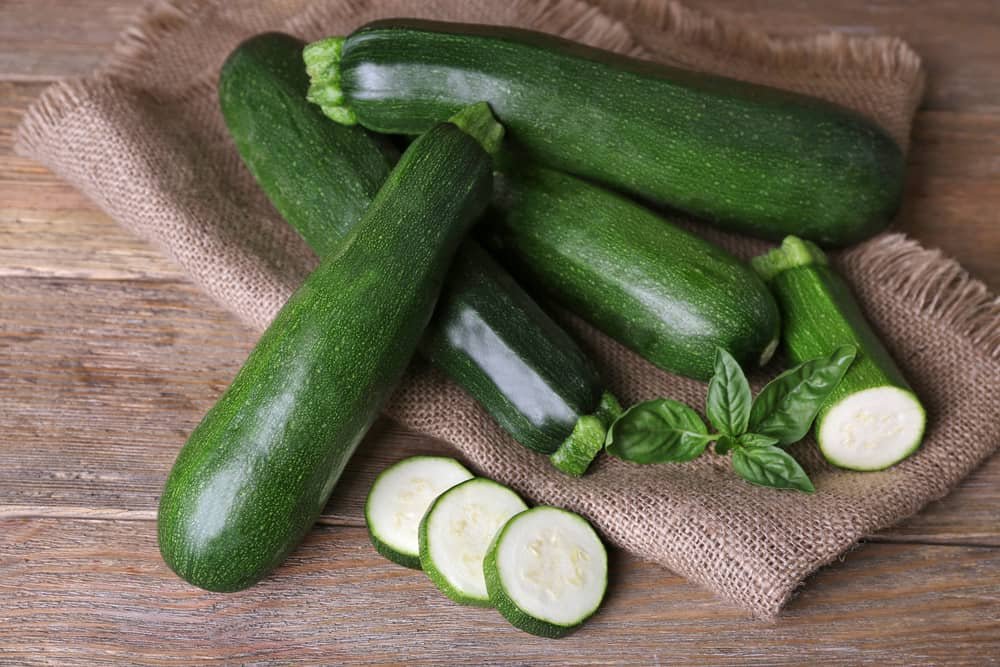Eating healthy and local is becoming more and more important for many people. While it may be difficult to find fresh, organic vegetables all year round, there is a solution: freezing your own vegetables.
With a few simple steps and some basic equipment, you can get the benefit of fresh vegetables all year long. In this article, we will discuss tips and tricks on how to freeze vegetables correctly so you can enjoy them throughout the year.
Artichoke
Freezing Artichokes is a great way to preserve their freshness and nutritional content. In just a few simple steps, you can enjoy this delicious vegetable for up to six months. Whether you want to use them in a dip or simply save them for later, freezing artichoke is the ideal way to keep them fresh.

To prepare your artichoke for freezing, begin by washing and trimming off the stems and thorns from each of the leaves. Make sure to peel away any tough outer layers before cutting the artichokes into small pieces. Next, place them in boiling water for three minutes then quickly remove them and plunge into an ice bath to stop the cooking process. Finally, once they are cool, drain any excess water before transferring them onto baking sheets lined with parchment paper.
Arugula
Arugula is one of the most popular leafy greens on the market, boasting a peppery flavor and high nutritional value. But if you don’t use it up fast enough, it can end up wilting in your fridge. To make sure that your arugula stays fresh and delicious for as long as possible, freezing them is a great option.

Freezing arugula is surprisingly simple, and not only does it help to preserve their taste and texture, but it also helps to retain the maximum amount of nutrients. All you need to do is wash them thoroughly before blanching—which involves quickly boiling or steaming them—and then submerging them in an ice bath right afterward. After draining any excess water off of your arugula, divide them into individual servings before placing them into freezer-safe bags or containers for storage.
Asparagus
Asparagus is a delicious vegetable that is versatile and can be cooked in many different ways. Freezing asparagus properly ensures that it stays fresh, retains its flavor, and can be enjoyed long after it’s been harvested. Knowing the right way to freeze asparagus will keep your vegetables fresh for months on end.

To begin freezing asparagus, start by washing the spears thoroughly under cold water. Pat dry with paper towels and then trim off about an inch from the bottom of each spear. Blanching is key to preserving their texture; drop trimmed spears into boiling water for two minutes before removing them from heat and plunging them into ice-cold water. After they’re cooled, pat dry again with a clean kitchen cloth or paper towel before arranging them onto a baking sheet lined with parchment paper.
Bell peppers
Freezing bell peppers is a great way to keep them fresh and nutritious for months. It’s an easy process that requires just a few simple steps.
First, select the freshest bell peppers you can find. You want to make sure they are firm, brightly colored and free of bruises or blemishes. Cut them into slices or cubes, depending on how you plan to use them later in recipes.
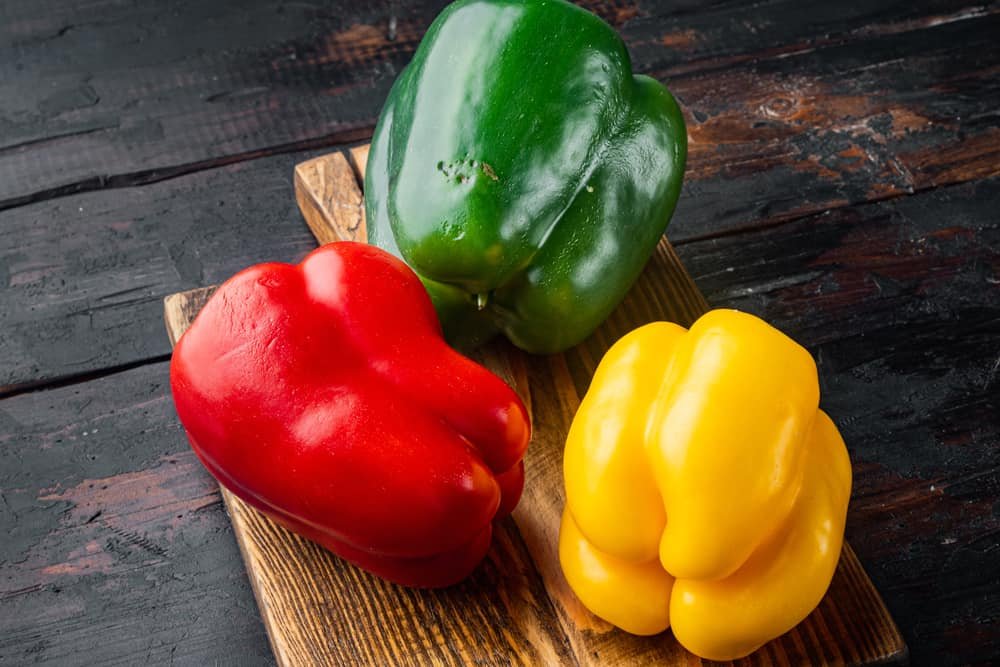
Blanching is optional but recommended as it helps preserve their color and texture when frozen. To blanch the bell peppers, place them in boiling water for two minutes before transferring to an ice bath for another two minutes. Once blanched, pat dry with paper towels then transfer to a freezer-safe container or freezer bag. For best results, squeeze out any excess air from the bag before sealing tightly and freezing for up to six months.
Beets / Beetroot
Freezing beets or beetroot is a great way to keep them fresh and healthy. Beetroots are full of essential vitamins and minerals, so the ability to store them fresh is invaluable. With a few simple steps, you can easily freeze beets for later use in salads, soups and other dishes.
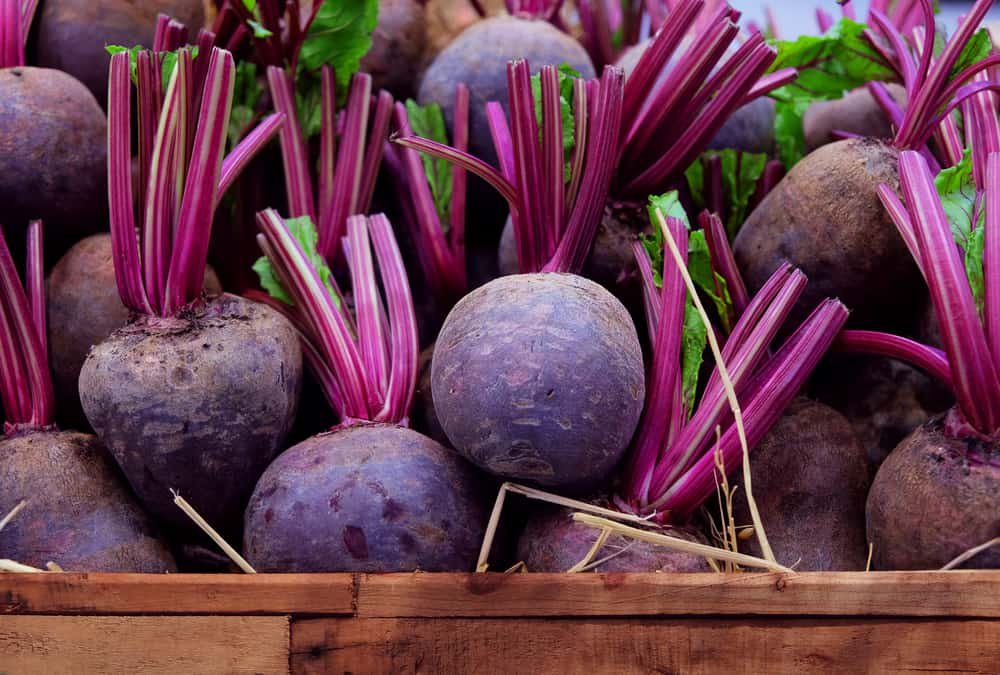
The first step in freezing beets is to wash them thoroughly. It’s best to remove any leaves from around the root as they won’t survive freezing very well. Once washed, cut the beets into cubes or slices, depending on how you plan on using them later. Blanching them briefly will make sure they stay bright red and retain their natural flavor when thawed out again. Boil some water and add salt before adding the beetroot cubes for about 1 minute before plunging into cold water to stop cooking.
Beet Greens
Freezing beet greens is a great way to keep them fresh and healthy. Beet greens are a superfood, packed with vitamins and minerals like calcium, iron, magnesium, B-vitamins and Vitamin K. When frozen properly they can retain their nutritional value for up to 8 months! Here’s how you can freeze your beet greens the right way:
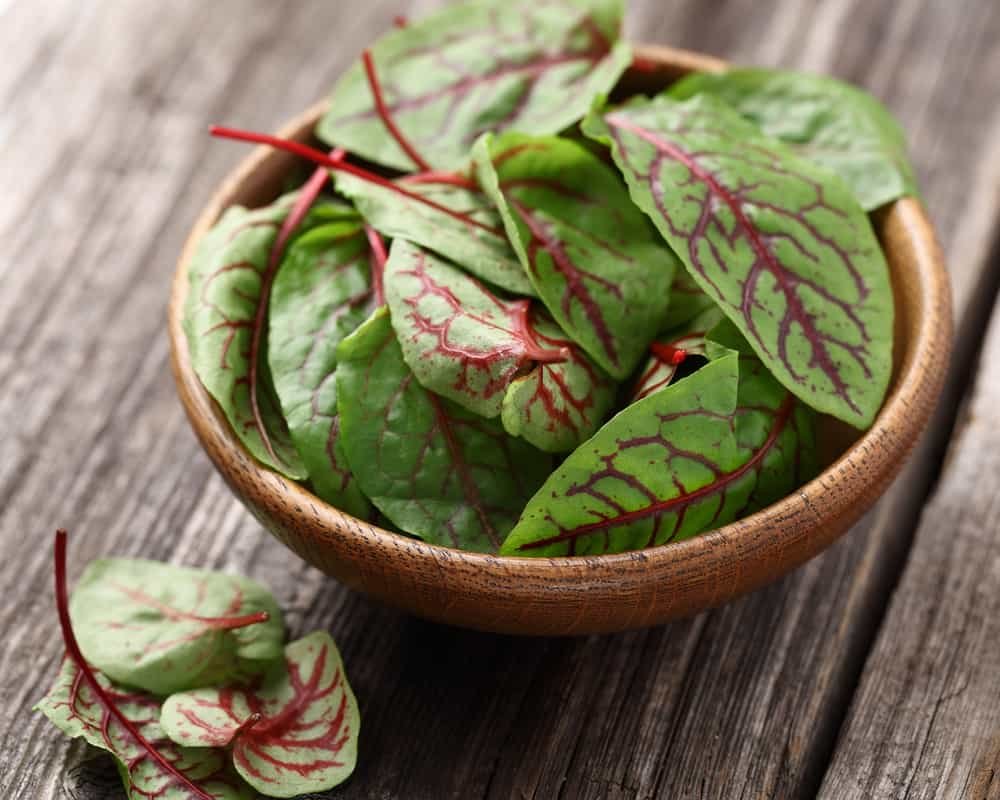
Start by thoroughly washing your beet greens. Remove any dirt or debris from the leaves before chopping or tearing them into bite-sized pieces. You can also blanch them in boiling water for 3 minutes before freezing; this helps to preserve the vibrant colors of the leaves even after being frozen. Once prepped, spread them out on a baking sheet lined with parchment paper and place in the freezer for 2 hours until completely frozen solid.
Bok Choy
Bok choy is a versatile and delicious vegetable that can be enjoyed in many different dishes. But if you have an abundance of bok choy, it’s important to know how to store them properly so they stay fresh and healthy. Freezing bok choy is one method that keeps the taste and texture intact while also preserving its nutritional value. Here are some tips on how to freeze bok choy for maximum freshness:
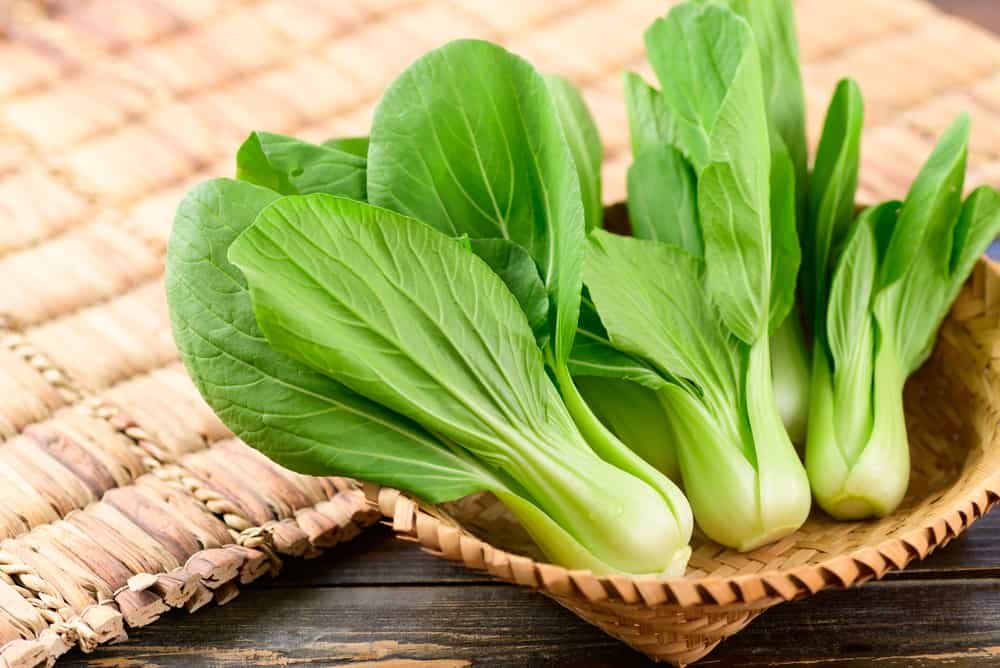
First, it’s essential to clean the bok choy before freezing. Rinse them under cold water and pat dry with paper towels or a kitchen towel. The next step is to blanch the vegetable by briefly boiling or steaming it for about 2 minutes, then plunging it into cold water for another 2 minutes. This helps preserve its color, texture, flavor, and nutrients.
Broccoli
Freezing broccoli is a great way to keep it nutritious and fresh. In fact, freezing broccoli can actually retain more of the vegetable’s vitamins and minerals than storing it in the fridge or on the countertop. If you’re willing to take a few simple steps, you can enjoy frozen broccoli for months without worrying about its nutritional value.

The first step is to thoroughly wash your broccoli, remove any wilted or browned parts, and cut off leaves if necessary. After all of this has been done, blanch your broccoli by boiling it in salted water for 3-4 minutes before transferring it into an ice bath to stop cooking and preserve its color. Once cooled down, spread out the florets on a baking sheet lined with parchment paper and freeze them until solid (this should take no longer than one hour).
Brussels Sprouts
Freezing vegetables is an easy and effective way to keep them fresh and healthy for long periods of time. Brussels sprouts are no exception! There are several simple steps you can take to freeze your Brussels sprouts in order to maximize their nutritional value, taste, and texture.

The first step is to thoroughly wash the Brussels sprouts in cool water. This will help remove any dirt or contaminants that may be on the surface of the vegetable. Once they’re clean, trim off any discolored or wilted leaves before cutting them into smaller pieces or slicing them thinly. Blanching the Brussels sprouts in boiling water for a few minutes is also recommended before freezing as this helps preserve their color, flavor, and texture.
Broccoli Rabe (Rapini)
Freezing broccoli rabe (rapini) is an easy and effective way to keep them fresh and healthy. Not only does freezing help preserve the nutritional value of this nutritious green, but it can also help extend its shelf life for up to 8 months. With a few simple steps, you can learn how to freeze broccoli rabe to enjoy its flavor and texture all year long.
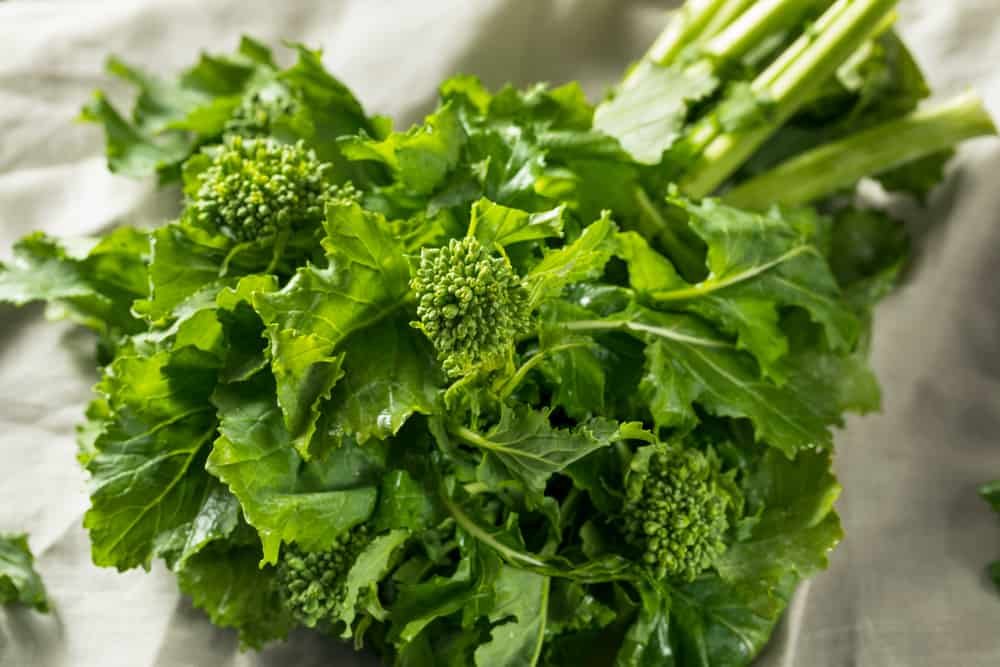
The first step in freezing broccoli rabe is to rinse them well under cold water. Remove any wilted or damaged leaves, then pat the greens dry with paper towels. Next, blanch the rapini in boiling water for two minutes before transferring them into an ice bath. This helps stop the cooking process as well as prevent discoloration or bacterial growth while they are stored in your freezer.
Butternut Squash
Butternut squash, with its sweet and nutty flavor, is a popular vegetable for many home cooks. Not only is it delicious when cooked fresh but freezing butternut squash can be a great way to keep your favorite vegetable in optimal condition and make them last longer! Freezing butternut squash is an incredibly easy process that takes just minutes of preparation time.
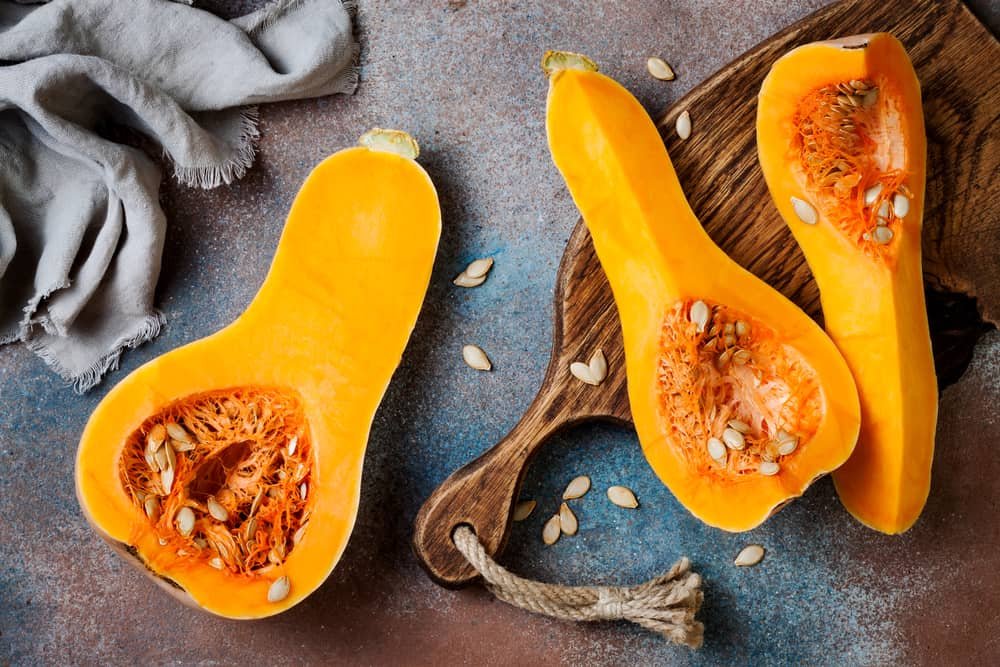
The best way to freeze butternut squash is by first cutting the vegetable into cubes or slices depending on your desired use. The pieces should then be boiled for about 3 to 5 minutes until slightly softened. Once cooled, place the pieces onto a flat surface lined with parchment paper and place them in the freezer for at least 2 hours so they are completely frozen.
Cabbage
Freezing cabbage is a great way to keep it fresh for a longer period of time. Cabbage can be frozen in both cooked and uncooked forms, allowing you to use the vegetable in many different recipes. The process of freezing cabbage is simple and straightforward, making it easy for anyone to freeze this nutritious vegetable at home.

When freezing uncooked cabbage, start by washing and shredding it into thin strips, cutting away any core or damaged parts. Then blanch the cabbage strips in boiling hot water for 1-2 minute before quickly transferring them into an ice bath to stop the cooking process. Once cooled down, drain out all excess moisture before packing the shredded cabbage into freezer-safe containers or bags with tight seals. Make sure there’s no air inside the bag before closing it off securely, as air can cause freezer burn and spoilage over time.
Cabbage (Red)
Freezing cabbage is a great way to preserve the nutritional value and taste of red cabbage for longer periods of time. When it comes to freezing red cabbage, there are a few simple steps that can help ensure its freshness and health benefits.
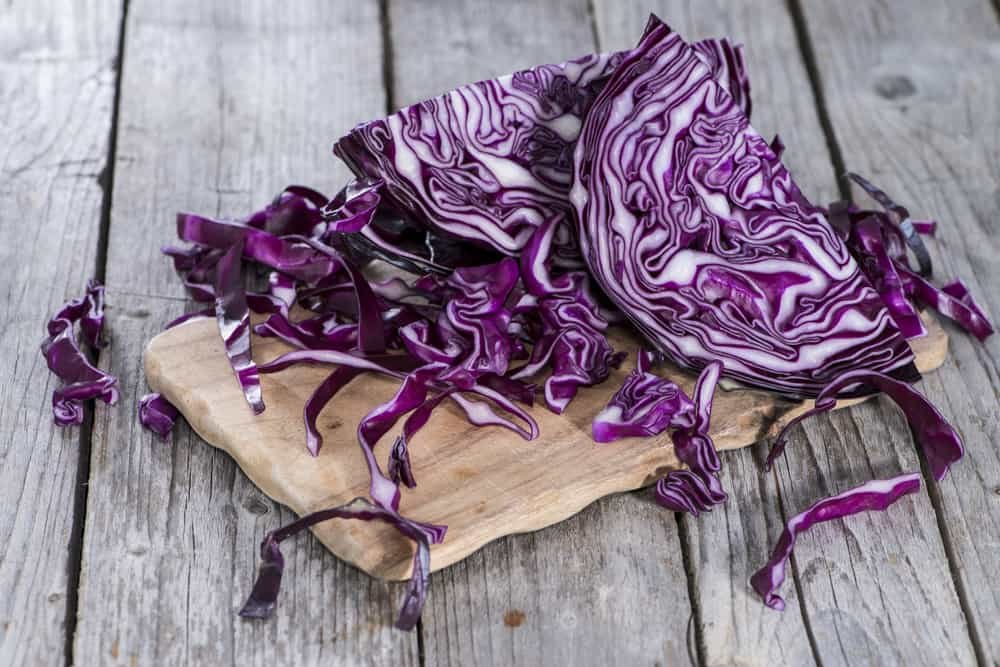
To get started, choose freshly harvested red cabbage heads with crisp leaves and deep color. Cut off any wilted or damaged outer leaves before washing the entire head in cold water. Slice the head into thin strips or shred it if desired. Blanching before freezing will help make sure that your frozen red cabbage retains its flavor, texture, and color when cooked later on. Once blanched, let the strips cool completely before transferring to lidded containers or freezer bags for storage in the freezer.
Carrots
Freezing carrots is the perfect way to preserve this beloved vegetable for later use. Not only will it save you space in your refrigerator and time spent shopping, but freezing carrots also help retain their flavor and nutrients. Here’s an easy step-by-step guide on how to freeze carrots at home.

First, select ripe and firm carrots with a vivid color and few blemishes. Thoroughly wash them under cold running water to remove dirt or debris, then cut off the green tops before peeling them (optional). Slice into coins or chop into small pieces depending on how you plan to use them later on. Blanching is recommended – boil a pot of water and cook the carrot slices for 2 minutes before immediately cooling them in ice water. Drain away excess water after blanching before transferring them into freezer bags or airtight containers.
Cauliflower
Cauliflower is a nutritious vegetable that can be used in many different recipes. But if you buy too much at the grocery store, it may be difficult to eat all of it before it spoils. To make sure your cauliflower stays fresh, one of the best methods is to freeze it. Freezing cauliflower will help preserve its texture and taste while ensuring that you have an ample supply of this healthy food on hand whenever you need it.
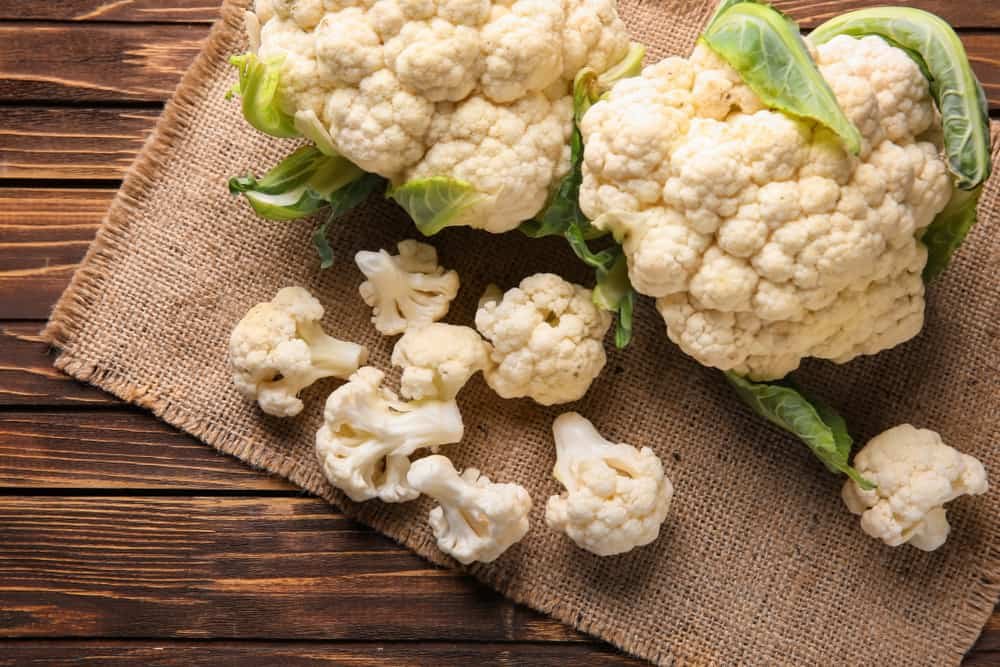
The process for freezing cauliflower is fairly simple; start by washing and trimming the head into small florets. Blanching these florets in boiling water for two to four minutes will ensure they remain firm when frozen and make them easier to cook with later on. Once blanched, drain the florets and put them in an airtight container or zip-top bag for freezing.
Celery
Are you looking to make sure your celery stays fresh for longer? Freezing celery is a simple and effective way to store it for months. The process requires minimal preparation and is ideal for extending the shelf-life of this popular crunchy vegetable. Here’s how to freeze celery without compromising its flavor or texture:

Start by washing the celery stalks thoroughly, making sure all dirt and debris are removed. You can either cut them into smaller pieces or leave them whole depending on what you plan to use the frozen celery for later. Blanching the stalks in boiling water prior to freezing helps preserve their color and texture, but it’s optional. Place cut pieces on a baking tray lined with parchment paper then pop it in the freezer until they’re solid before transferring them into airtight containers or resealable bags.
Chives
Freezing chives is a great way to keep them fresh and healthy. It’s easy to do and requires just a few simple steps. First, you will need to wash the chives with some cold water so that they are free of any dirt or debris. Next, pat the chives dry with a paper towel or kitchen cloth before cutting them into small pieces.
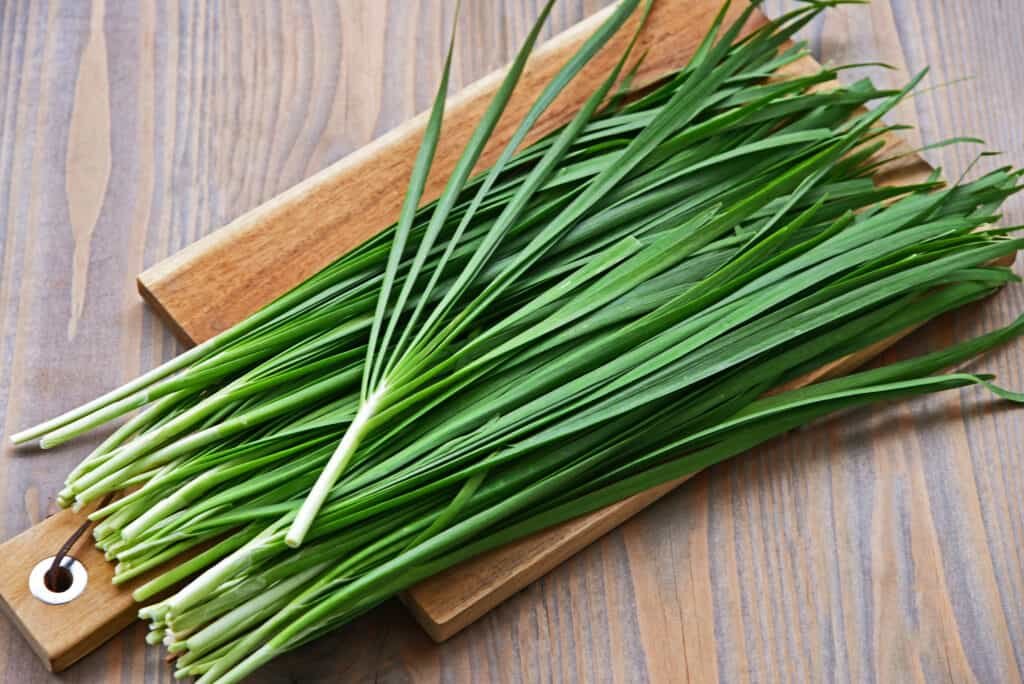
After you have cut the chives into desired sizes, spread them out on a baking sheet lined with parchment paper or wax paper. Place the baking sheet in the freezer for about two hours until completely frozen. Once frozen, transfer the chives into an airtight container or freezer bag and store them in your freezer for up to two months depending on their expiration date. When ready to use, thaw out as much as needed and add it directly to any dish that calls for freshness and flavor!
Collard Greens
Collard greens are a nutrient-dense leafy green vegetable and an incredibly versatile food. Whether cooked or raw, they bring a wealth of nutrition to any meal. Freezing collard greens is an excellent way to preserve their freshness and ensure their healthy benefits remain intact. Here’s how to freeze your own collard greens so you can enjoy them all year round.
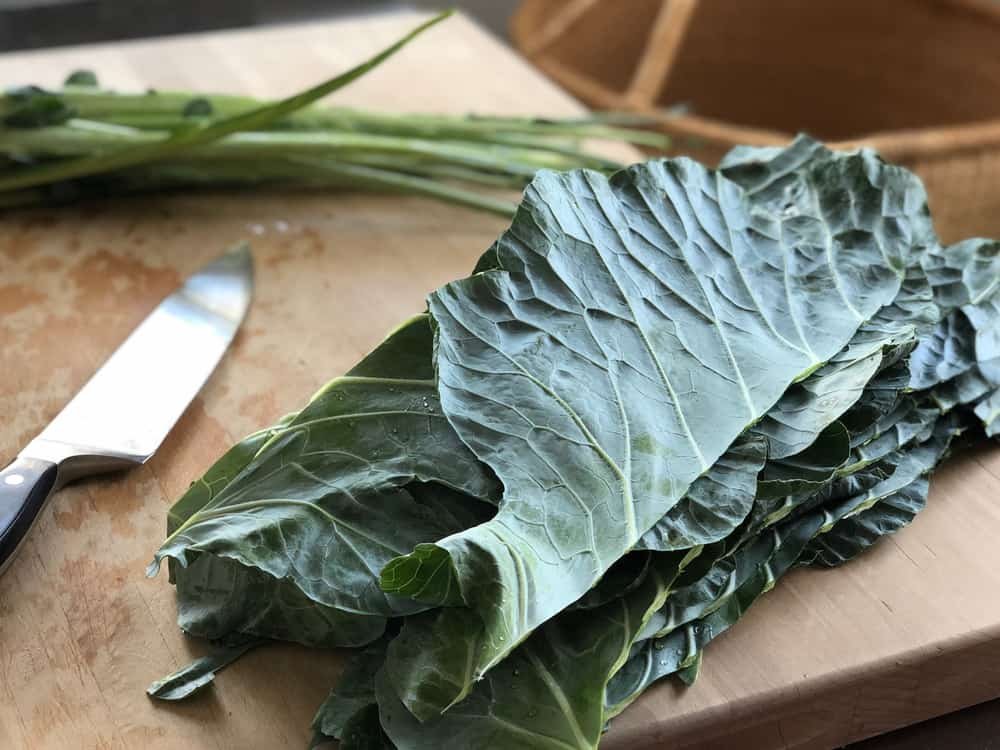
Make sure the collard greens are properly washed with cold water before freezing them in airtight bags or containers. If you wish, pre-cook the leaves by steaming, boiling, or sautéing briefly with oil and garlic for added flavor. Alternatively, blanching – which involves plunging the leaves into boiling water for a few minutes before cooling them in iced water – helps to retain much of their nutritional value as well as their color and texture.
Corn
When freezing corn on the cob, it’s important to use the freshest corn available for the best outcome. With a few simple steps, you can freeze delicious and sweet ears of corn that will stay fresh for months. Here are some tips on how to freeze corn to keep it tasting its absolute best.
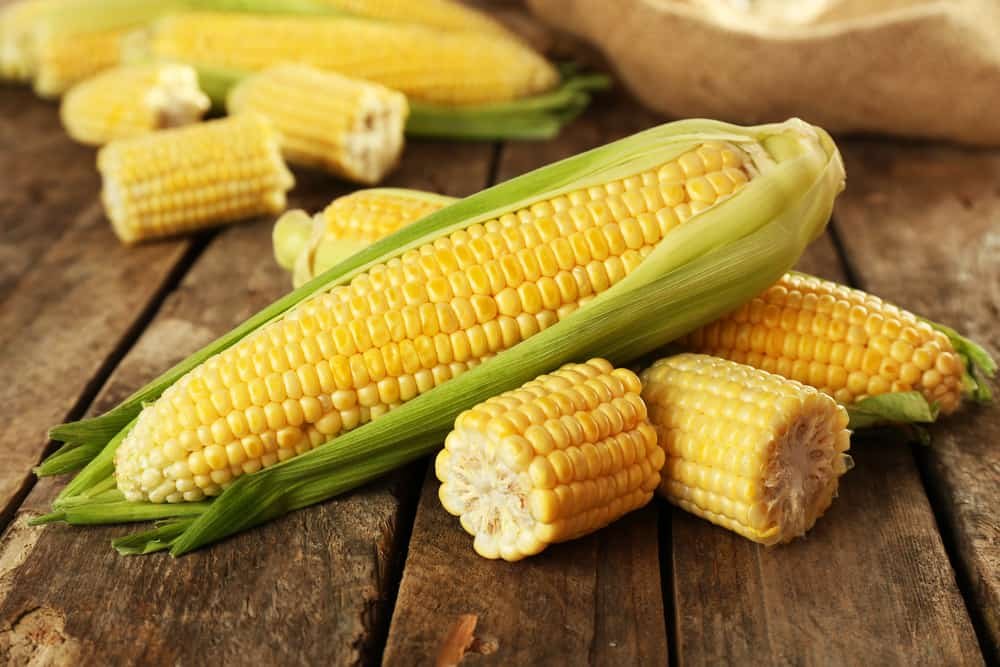
The first step is to select only fully mature and ripe ears of corn. The color should be bright yellow or deep gold, with full kernels that are plump and juicy. Be sure to discard any ears with missing or browning kernels as they may not have adequate flavor once frozen. Once you have chosen your ears of corn, blanch them in boiling water for three minutes before slipping off the husks and silk strands from each ear.
Crookneck Squash
Freezing crookneck squash is a great way to keep them fresh and healthy over a long period of time. Not only does freezing the squash help you save money by avoiding food spoilage, but it also helps keep the vegetables free from harmful bacteria or unwanted microorganisms.
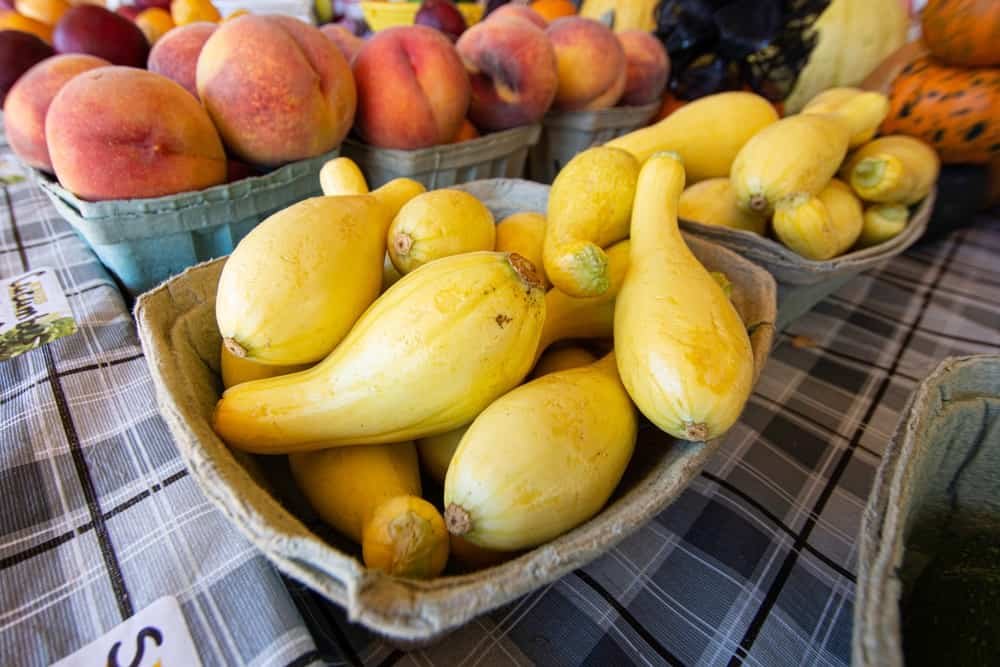
To freeze crookneck squash properly, start by washing and slicing them into 1-inch cubes or thin strips. Blanching the pieces in boiling water for 2-3 minutes helps prevent discoloration and preserve their flavor. Remove the blanched cubes from the water and cool them quickly in cold water or ice bath to stop any further cooking process. Once cooled down, drain the cubed squash well and lay them out on a baking tray lined with parchment paper; this will help avoid clumping when frozen.
Cucumbers

Daikon Radish
Are you looking to keep your Daikon Radish fresh and healthy? Freezing is a great way to preserve the flavor and nutrients of this nutrient-rich root vegetable. Knowing how to freeze Daikon Radish correctly can help you enjoy their flavor and nutrition for months at a time. Here’s what you need to know about freezing Daikon Radish so that they stay fresh and healthy.
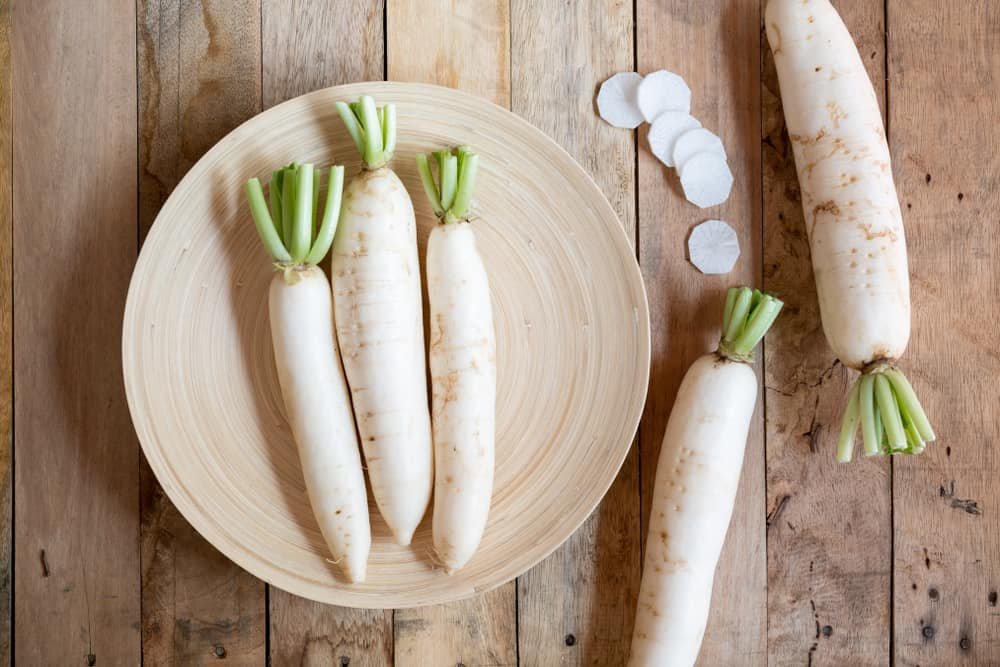
First, it’s important to choose radishes that are firm, smooth, bright in color, and free from blemishes or discoloring. Cut off the leaves before washing them in cold water then pat dry with paper towels. Once the radishes are prepped, spread them out on a parchment-lined baking sheet then place it in the freezer for two hours.
Dandelion Greens
Dandelion greens are a nutritional powerhouse, containing high amounts of vitamins A and K. But if you don’t eat all of your dandelion greens right away, you’ll want to make sure they stay fresh and healthy until you can consume them. Freezing is one of the best ways to preserve dandelion greens for later consumption. Here’s how to freeze dandelion greens so that they stay fresh until you’re ready to enjoy them.
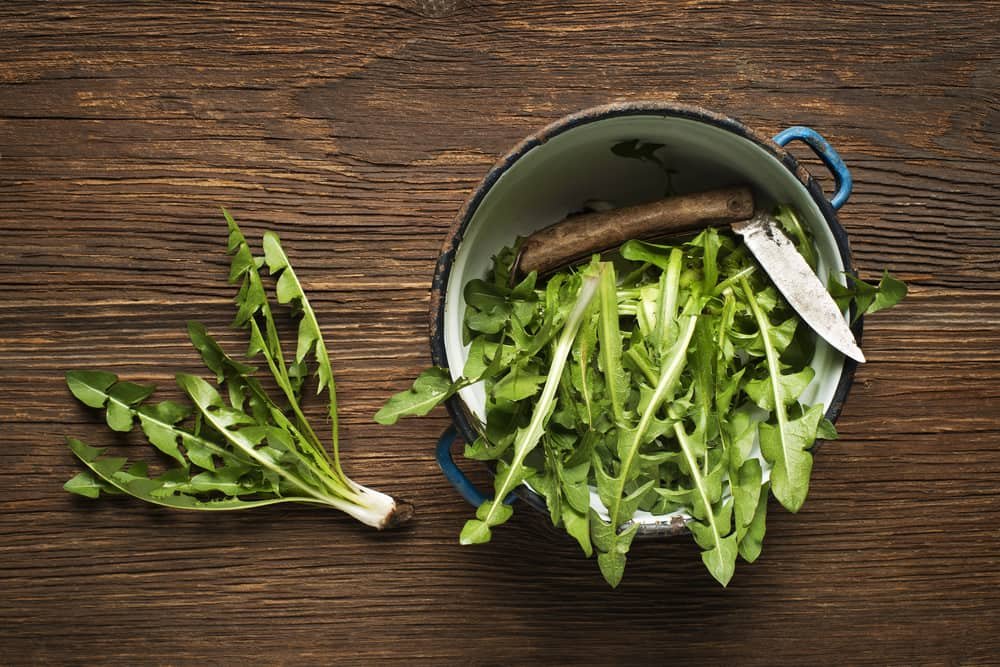
Start by thoroughly washing the dandelion greens in cold water. Thoroughly dry them with a clean cloth or paper towel before moving on to the next step. Once the leaves are completely dry, cut off any woody stems and separate the leaves into individual portions that are easy to use later on.
Eggplant (Aubergine)
Eggplants, also known as Aubergine, are a popular choice for many recipes. However, if you have more than you can use at one time, freezing is a great way to keep them fresh and healthy. By taking the right preparation steps before freezing eggplant, it will last for up to 10 months in the freezer.
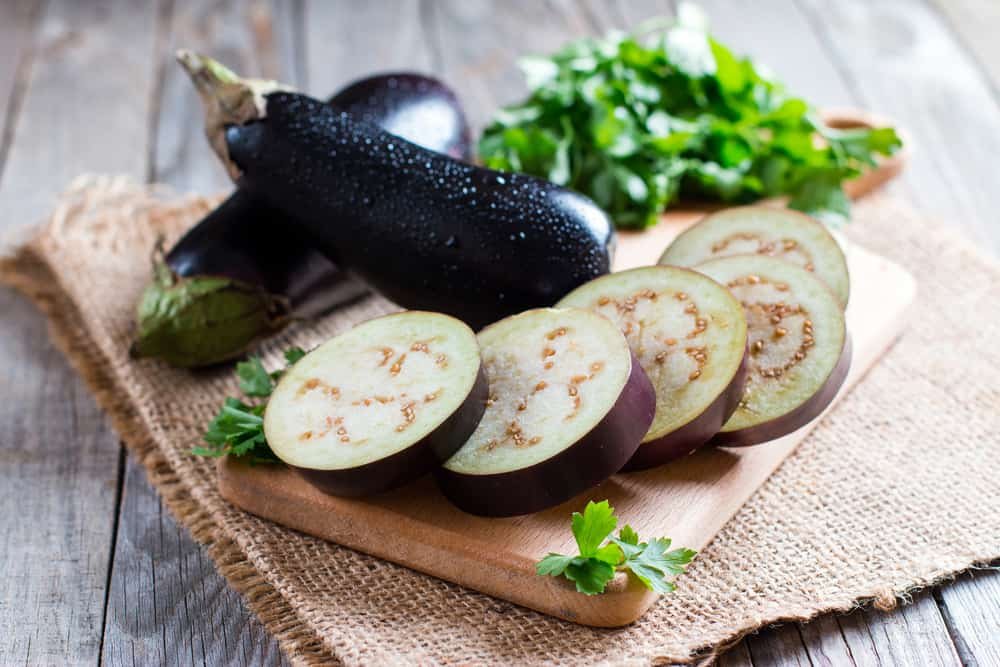
The first step in freezing eggplant is to wash and clean them thoroughly. Next cut off both ends of the eggplant and discard any stems or leaves that may be attached. Slice or cube the eggplant into your desired shape pieces then blanch them in boiling water for two minutes before transferring them into an ice bath to stop the cooking process. Once cooled pat dry with paper towels and place on a baking sheet lined with parchment paper so they do not stick together when frozen.
Endive
Endive is a leafy vegetable that is known for its slightly bitter flavor and crunchy texture. While it can be eaten fresh, many people prefer to freeze endive in order to keep them for a longer period of time. This method not only helps extend the shelf life of the vegetable but also preserves the freshness and quality of the endive.
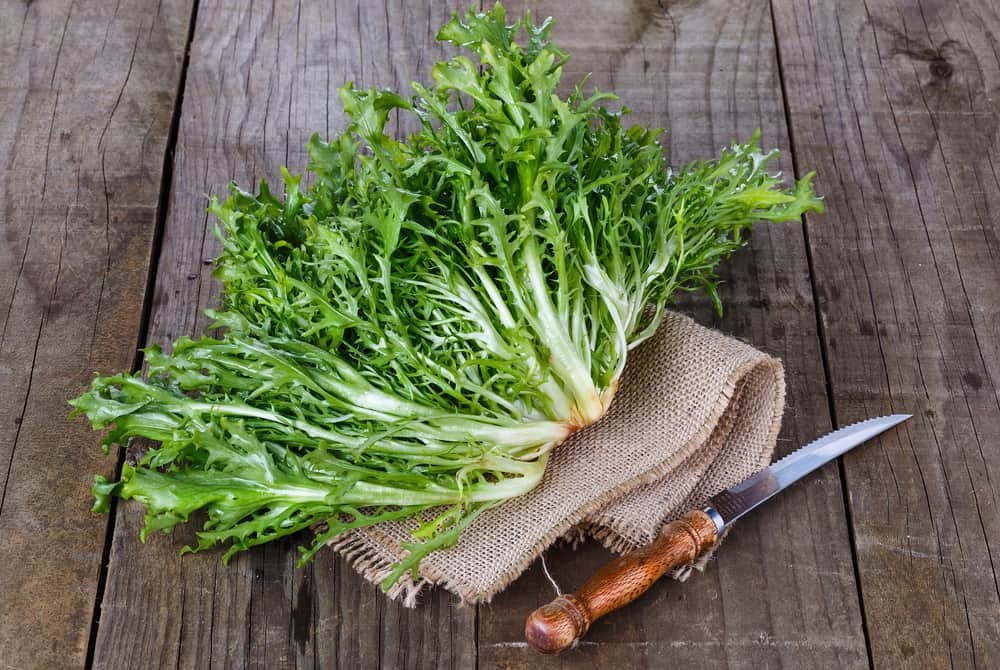
Freezing endive is simple and straightforward; all you need to do is wash them carefully with cold water before cutting off any brown spots or discoloration. Once cut up, spread out your endive on a baking sheet lined with parchment paper and place it in the freezer overnight, or until frozen solid. Once frozen, transfer your endives into an airtight container or bag and make sure they are properly sealed before returning them to your freezer.
Garlic
If you love cooking with garlic, but don’t use it often enough to keep a whole head fresh, freezing it is an ideal way to store it for later. Freezing garlic helps to retain its flavor and texture for up to six months, making it an excellent way to preserve the vegetable. Here are some simple tips and tricks on how to freeze garlic in order to keep it as fresh as possible.

The first step is to select a good-quality head of garlic that is firm and healthy-looking, without any signs of discoloration or damage. Peel off the papery outer skin and then separate each clove from the bulb. Place them in a single layer on a parchment-lined baking sheet and put them in the freezer until they are frozen solid – usually around four hours. Once frozen, transfer them into airtight containers or freezer bags.
Green Onion (Spring Onion)
Green onions, also known as scallions or spring onions, are a tasty and healthy addition to many dishes. They have a mild onion flavor and can be used raw or cooked. If you’re looking for a way to keep your green onions fresh longer, freezing is an excellent option. With proper preparation and storage techniques, you can freeze green onions so they maintain their flavor and nutritional value.
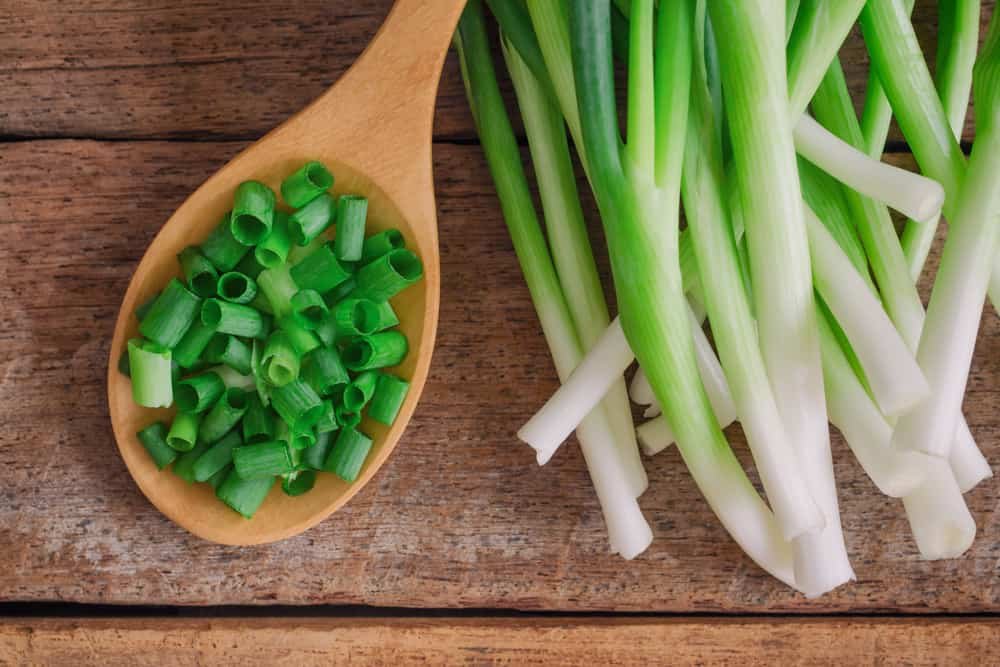
To prepare green onions for freezing, begin by washing them well to remove any dirt or debris. Trim the roots off of the end of each onion but leave about 1/4 inch on the stem end intact. Pat the onions dry with a paper towel before chopping them into small pieces if desired – this will make them easier to measure out when using in recipes later on.
Green beans
Freezing green beans is a great way to make sure your vegetables stay fresh and delicious. With the right instructions, you can easily freeze green beans that will retain their flavor and texture for up to 8 months. Here are some tips on how to freeze green beans reliably:

First, start by sorting through your fresh green beans and discarding any that are wilted or diseased. Next, give them a quick wash in cold water. Blanching them in boiling water for 2-3 minutes helps preserve their flavor and color as well as prevent nutrient loss during freezing. Once you’ve blanched the beans, place them in an ice bath for a few minutes before draining off the excess liquid and patting dry with a paper towel.
Green onions
If you want to enjoy the fresh flavor of green onions throughout different seasons, then freezing them is an easy and effective option. Freezing green onions helps preserve their color, texture, and flavor for up to one year. To get started with freezing your own green onions at home, follow these simple steps.
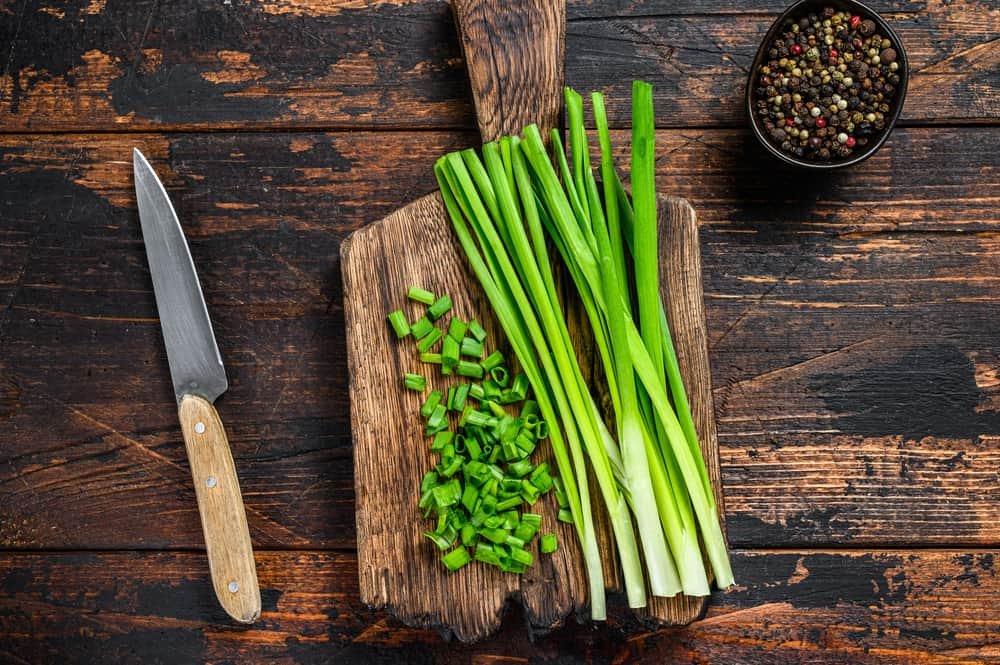
First, make sure the green onions are completely clean before you freeze them. Gently rinse the onions under cold water and pat them dry with paper towels or a kitchen towel. Cut off any part of the onion that looks brown or wilted. Once done, prepare a baking sheet by lining it with parchment paper.
Next, spread out the entire bunch of green onions onto the prepared baking sheet in a single layer so that no two pieces are touching each other.
Jicama (Mexican Yam Bean)
Freezing Jicama, also known as Mexican Yam Bean, is a great way to keep them fresh and healthy for months. Jicama offers a crisp texture and sweet flavor that is perfect for adding to salads, stir-fries, and tacos. With the right method of preparation and storage, you can enjoy this delicious vegetable all year long.
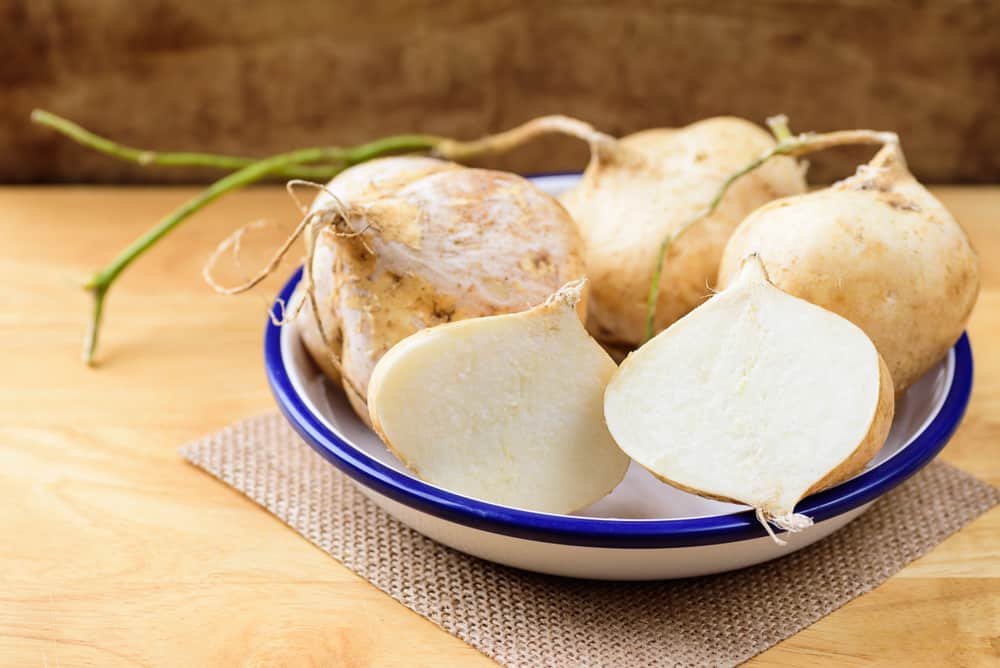
Before freezing Jicama it needs to be cut into cubes or slices that are no more than 1/4 inch thick. Blanching the jicama in boiling water helps to lock in nutrients while maintaining its crunchy texture. After blanching let the pieces cool before freezing them on a baking sheet until they are solid enough to store in air-tight containers or freezer bags. When ready to use, thaw the jicama overnight in the refrigerator or by using the defrost setting on your microwave.
Kale
Kale is a nutritious, leafy green vegetable that can be eaten raw or cooked. It’s packed with a plethora of vitamins and minerals, making it an excellent addition to any diet. However, if you want to keep your kale as fresh and healthy as possible, freezing it is the way to go! This article will explain how to freeze kale so you can enjoy its nutritional benefits long after the harvest season has ended.

When freezing kale, it’s important to begin by thoroughly washing and drying the leaves. Then tear or cut them into smaller pieces before placing them in freezer-safe bags or containers. Before sealing the bag or container shut, try pressing out any excess air so that your kale won’t suffer from freezer burn.
Kimchi
Kimchi is a traditional Korean side dish that is made from fermented vegetables. The fermentation process gives it its unique flavor, but it also tends to mean that kimchi can become over-fermented or start to lose its freshness if not stored properly. For those looking to keep their kimchi at the peak of freshness and health, freezing it is the best option.

Freezing kimchi helps to prevent any additional fermentation while preserving its nutrient content and keeping it safe from spoilage due to bacteria or mold growth. To freeze your kimchi correctly, begin by washing and draining the vegetables thoroughly before packing them into an airtight container or freezer bag. Make sure there’s no air left in the container before sealing it tightly. Label your container with the date you froze your kimchi so you know when it should be consumed by for optimal quality.
Kohlrabi
Kohlrabi is a nutritious and versatile vegetable that can help add flavor and texture to your favorite dishes. If you want to keep kohlrabi fresh for longer, freezing them is an easy solution. Freezing kohlrabi not only helps preserve their nutrients but also makes cooking with them easier than ever. Here’s how you can get started:

Start by washing the kohlrabi thoroughly to remove any dirt or debris from the surface. Peel off the tough outer skin of the vegetable before cutting it into cubes or slices, depending on what recipe you plan to use them for later on. Blanching is a good idea as well—this process helps slow down enzyme activity and prevents discoloration of the vegetables during storage in the freezer.
Leeks
Freezing leeks is an easy way to keep them fresh and healthy. Not only does it extend the shelf life of your leeks, but freezing them also helps maintain their flavor and texture. Leeks are often used in soups, stews, and other dishes to add a unique flavor and texture – so keeping them in top condition is essential. Here’s what you need to know about freezing leeks.

First, start by washing the leeks thoroughly under cold running water before cutting off the roots and leafy tops. Cut the remaining stalk into pieces that are roughly 1/2 inch thick or smaller for easier storage. Blanching your leeks is optional but recommended as it will help retain their flavor and color during storage.
Lettuce
Freezing lettuce is a great way to keep it fresh and avoid wasting any of it. When done correctly, the freezing process will help preserve the texture and flavor of your lettuce for months at a time. Here are some tips to help you freeze lettuce so that it stays as fresh and tasty as possible.

To start, select only the freshest heads of leafy green lettuce for freezing; discoloration or wilting indicates that the lettuce is past its prime and should not be frozen. Wash each head thoroughly with cold water; do not use soap or detergent as this can impart an unpleasant taste on the leaves once they are frozen. Dry each head completely before moving on to the next step; wet lettuce won’t freeze properly and can cause freezer burn.
Mushrooms
Mushrooms are a delicious and nutritious addition to any meal. Unfortunately, they can be expensive and sometimes hard to find. But with some simple freezing techniques, you can have mushrooms on hand all year round! Freezing mushrooms is a great way to ensure your mushrooms stay fresh for up to 12 months after purchasing them. Here are three easy steps for freezing your mushrooms so that their flavor, texture and nutrient content remain intact.

First, it’s important to clean the mushrooms thoroughly by wiping them off with a damp cloth or paper towel. Next, place them in a single layer on a baking sheet or plate and freeze for two hours until solid. Finally, transfer the frozen mushrooms into freezer-safe bags or containers labeled with the date of purchase and store them in the freezer until needed.
Mustard Greens
Mustard greens are a tasty and nutritious addition to any meal. They have a sharp, slightly bitter taste and great health benefits such as providing essential vitamins and minerals like vitamin A, vitamin K, and calcium. Unfortunately, due to their high water content mustard greens don’t last long when stored in the refrigerator. Fortunately, you can freeze mustard greens to extend their shelf-life while preserving the freshness and nutrition of the leaves. Here is how.
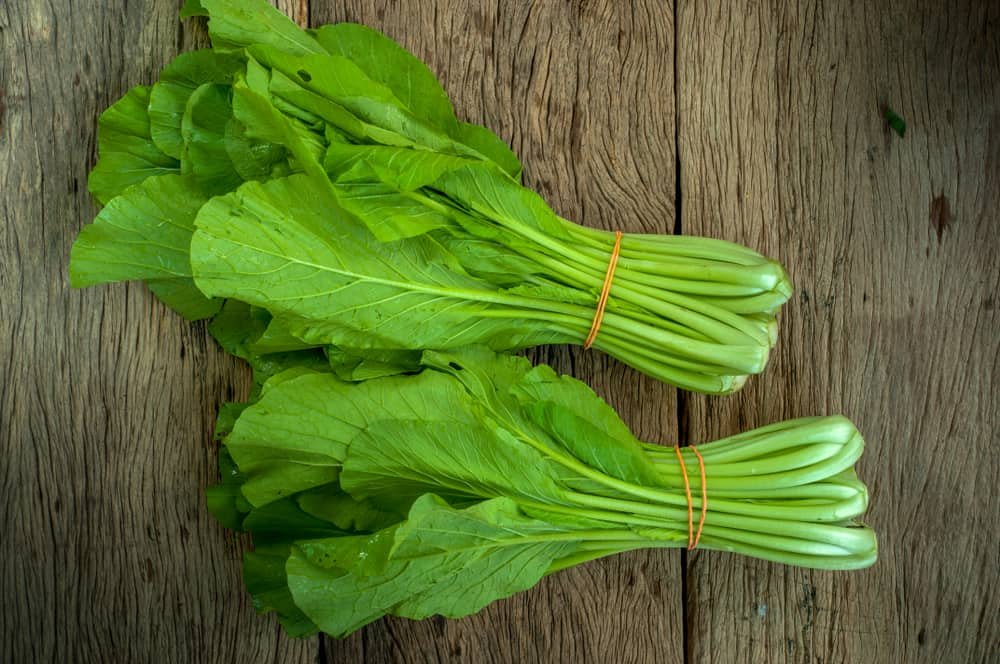
Begin by selecting fresh mustard greens with bright green leaves that are free from blemishes or wilting. Then thoroughly rinse them in cold water to remove dirt or other impurities before patting dry with paper towels or a kitchen cloth. Once dry cut away the stems if desired before chopping them into small pieces for easy storage later on.
Okra
Okra is an underrated vegetable that has a wealth of health benefits. It can be used in a variety of dishes, from soups to stir-fries, and it’s packed with vitamins and minerals. Freezing okra is an easy way to preserve its freshness and ensure you get all the nutritional benefits each time you enjoy it. Here are some tips on how to freeze okra correctly so that they stay healthy and delicious.

First, prepare your okra properly before freezing by washing it with cold water, patting it dry with paper towels, then cutting off the ends. This will help retain their flavor while also reducing spoilage during the freezing process. Next, blanch the okra for 3-4 minutes in boiling salted water or steam for 5-7 minutes until tender but still crisp. This step helps preserve their color and texture during storage.
Onions
For many, fresh onions are a staple ingredient in the kitchen. Unfortunately, they don’t last very long before going bad. But don’t worry; with a few simple steps, you can freeze onions and preserve their freshness and nutrition for months.

The first step to freezing onions is to select ones that are firm and free of bruises or blemishes. Cut off any green sprouts or damaged areas on the bulb before peeling away the skins. You can then dice them into small cubes or slices and spread them out on a parchment-covered baking sheet. Once frozen, transfer the diced onion pieces into an airtight container and store them in your freezer for up to nine months without losing any of their flavor or nutrients!
Onions (Yellow)
One of the best ways to keep onions (yellow) fresh and healthy is through freezing. Freezing onions can help to extend their shelf life and make them easier to store for longer periods of time. The process is relatively simple and requires minimal effort, making it a great way to preserve your onions. Here are some tips on how to freeze onions (yellow).
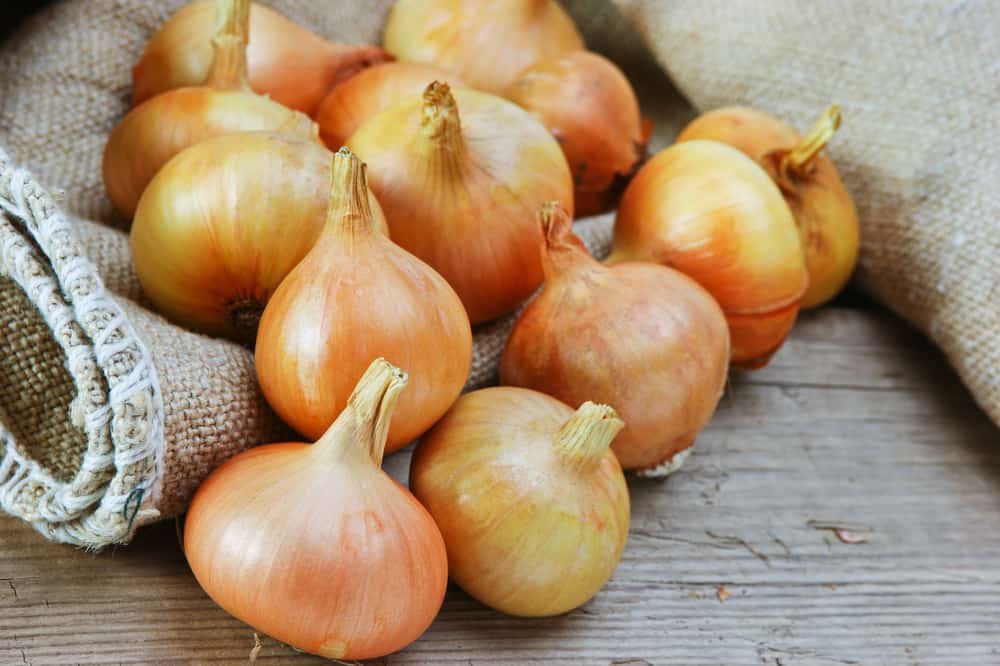
First, you’ll need to properly clean the onion by removing any dirt or debris that may be present on its outer layer. Once the onion has been cleaned, you’ll then want to chop it up into small cubes or slices depending on how you plan on using the frozen onion later. Place these chopped pieces of onion onto a baking sheet lined with parchment paper in order for them to freeze evenly. Once they’ve been spread out nicely, place the sheet into your freezer and allow them to freeze completely.
Parsnips
Parsnips are a root vegetable that can easily be found in any grocery store or farmers’ market. They are a very versatile ingredient and can be added to soups, casseroles, or even just boiled and enjoyed as a stand-alone side dish. To make sure they retain their freshness, flavor, and nutrients it is important to freeze them correctly. Here’s how you can do just that.

Firstly, it is essential to thoroughly wash the parsnips with cold water before beginning the freezing process. After washing them, cut off the top part that has leaves as well as any damaged parts of the parsnip. Then peel away the skin using either a knife or vegetable peeler.
Potatoes
Potatoes are one of the most versatile vegetables, able to be cooked in various ways. Unfortunately, they don’t last very long once you purchase them and can quickly spoil if not refrigerated immediately.

Fortunately, freezing potatoes is an easy way to preserve their freshness and nutritional value for up to six months! In this article, we will discuss how to freeze potatoes so that you can enjoy their delicious taste and nutrition for months to come.
Pumpkin
When it comes to freezing pumpkins, there are several ways you can go about doing it. Freezing pumpkins is a great way to keep them fresh and healthy for longer periods of time. You can freeze both raw or cooked pumpkin, depending on the desired usage. If you’re looking for a way to maximize your pumpkin’s shelf life, read on for some tips on how to freeze pumpkins.

The first step when freezing pumpkins is to choose the right variety for your needs. Before cutting into or cooking the pumpkin, make sure it is firm and free of blemishes or soft spots indicating spoilage. Once you have selected a suitable variety, cut it into cubes or slices according to the planned use – this makes portioning out easier later on in the process.
Purple Sweet Potato (Okinawan Yam)
Freezing Purple Sweet Potatoes (Okinawan Yam) is an easy and effective way to extend the shelf life of this nutritious root vegetable. Not only can it keep them fresh for months, but also preserves their natural flavor and texture. Here are a few simple steps you can follow to freeze Purple Sweet Potato properly for maximum nutrition and flavor:
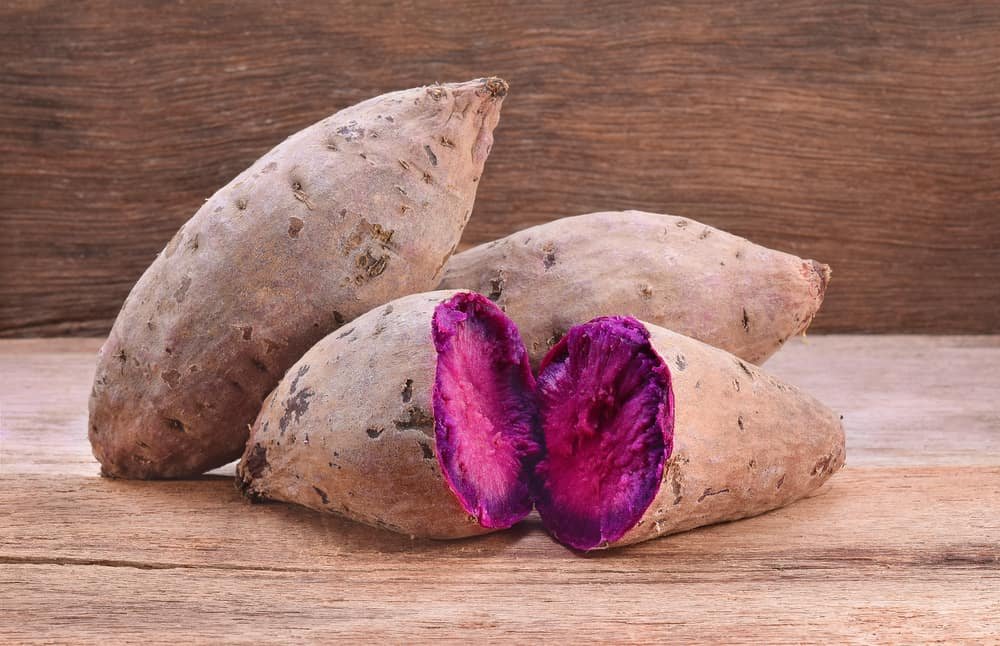
First, wash the potatoes thoroughly with running water to remove any dirt or residue. Then cut them in 1-2 inch cubes so they can cook evenly when reheated. Place the cubed potatoes on a baking sheet lined with parchment paper and freeze them overnight until they are solid. Finally, transfer the frozen cubes into an airtight container or freezer bag; this will help maintain their quality over time while preventing freezer burn. When ready to use, simply thaw out in the refrigerator overnight before cooking or adding to your favorite recipes!
Radicchio
Radicchio is a type of leafy green with a sweet, slightly bitter taste, and is rich in vitamins and minerals. If you want to keep your radicchio fresh, freezing it is the best way to go. Freezing radicchio not only keeps it fresher for longer periods of time but also preserves its flavor and nutrition. Here are the steps you need to take if you want to freeze your radicchio:
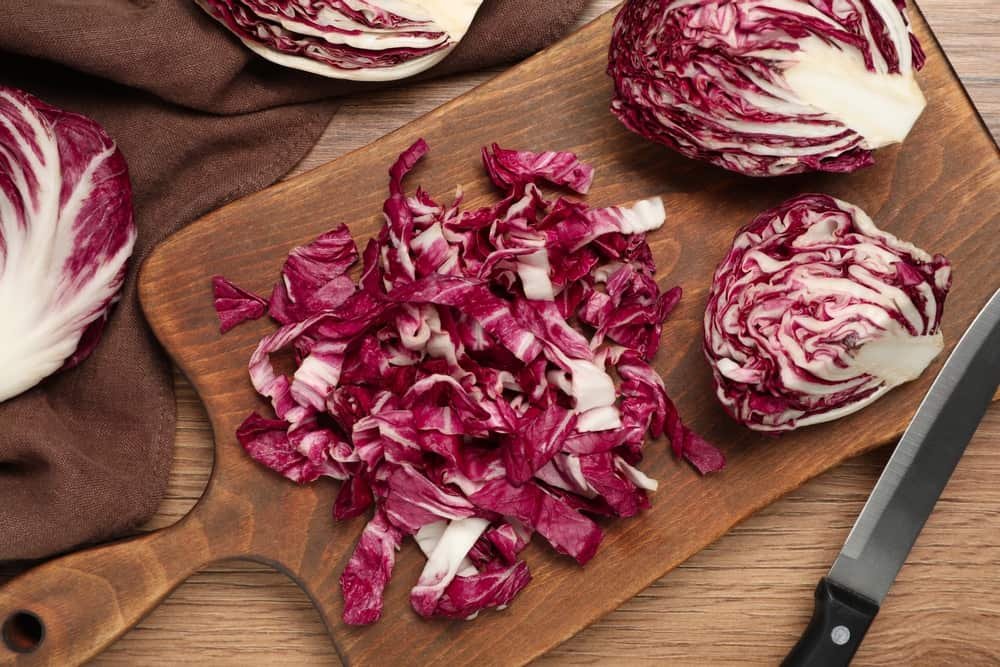
First, select only the freshest heads of radicchio that are free from wilting or discoloration. You can then rinse them off in cold water before patting them dry with paper towels or a clean kitchen cloth. Then, trim away any leaves that have become wilted or browned before chopping the head into small pieces (1-2 inches).
Radish
Freezing radishes is a great way to extend their shelf life and prevent them from going bad quickly. Radishes can be frozen in either their cooked or raw form, depending on the intended use. When done properly, freezing radishes can ensure a fresh and healthy product for up to six months of storage.
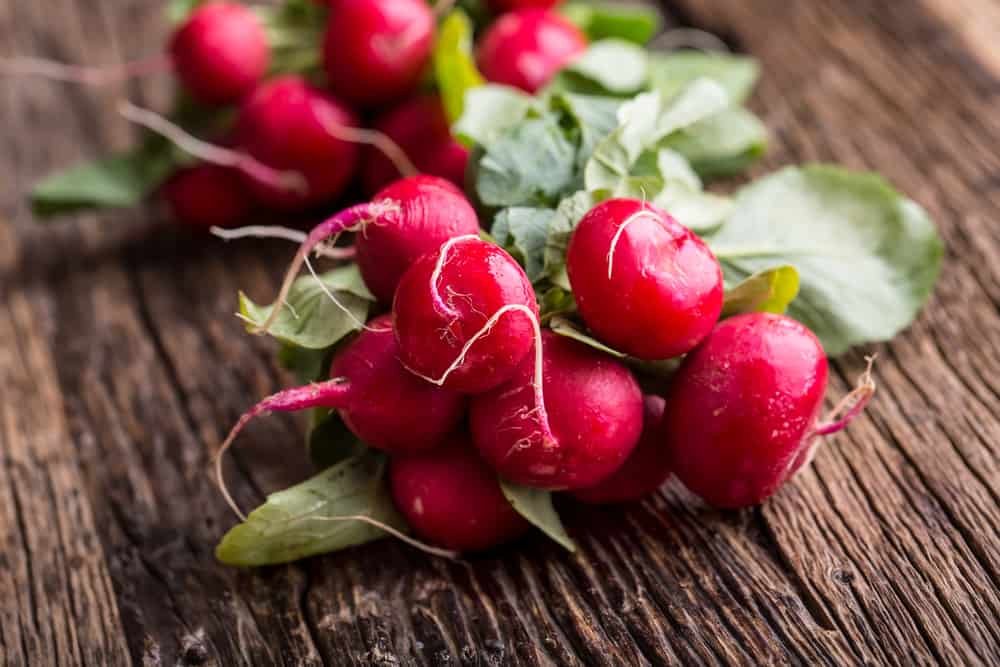
To freeze cooked radishes, it’s important to blanch them first by boiling them in water for two minutes until they are slightly softened. After draining the water, run cold water over the radish slices before transferring them into airtight containers like freezer bags. Be sure to squeeze out any extra air and label the container with the date it was frozen before storing it in the freezer.
Salad mix
Freezing salad mix is a great way to keep your favorite greens fresh for longer. It’s also an easy task that requires very few ingredients and simple preparation. Here are the steps you need to take to freeze salad mix and keep it fresh.

First, you’ll want to rinse the salad mix under cold water so that all dirt and debris are removed before it goes into the freezer. After rinsing, spread out the salad mix on a paper towel or dishcloth and allow it to dry completely. Once the greens have dried, place them in labeled freezer-safe bags or containers with dates clearly marked on them. Make sure there’s no air left in the bag before sealing tightly. Finally, store your frozen salad mix in a dark area of your freezer where temperatures remain constant for optimal results.
Swede (Rutabaga)
Freezing Swede is one of the best ways to ensure that you always have a ready supply of healthy and tasty vegetables. This root vegetable has numerous health benefits, including providing significant amounts of dietary fiber, vitamin C and potassium. Freezing Swede does not take long, so you can stock up on them for months at a time without having to purchase fresh produce every week.
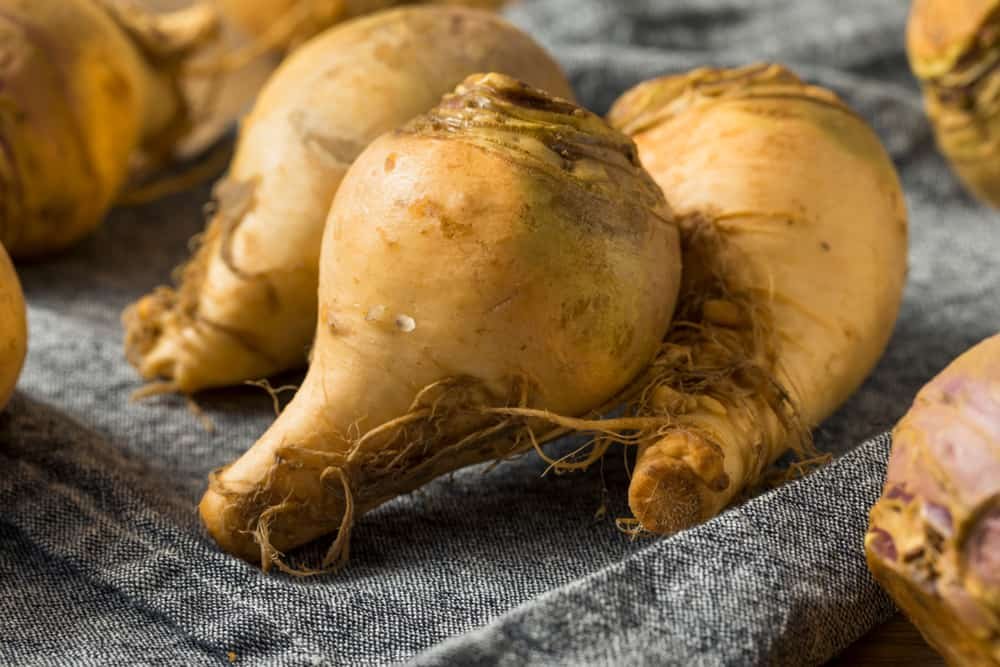
To freeze Swede properly, start by washing the vegetable under cold water and patting it dry with paper towels. Cut the Swede into small cubes or thin slices before blanching it in boiling water for two minutes. After blanching, place the pieces into an ice bath and then drain them before placing into freezer bags or airtight containers with lids.
Sauerkraut
When it comes to preserving sauerkraut, freezing can be a great way to keep them fresh and healthy. Sauerkraut is a popular fermented cabbage dish that has been around for centuries, as people have found it to be both delicious and nutritious. If you’ve recently purchased or prepared sauerkraut, you may want to consider freezing it in order to maximize its freshness and nutritional benefits. Here are some tips on how to properly freeze sauerkraut so that you get the most out of your food while also avoiding spoilage:
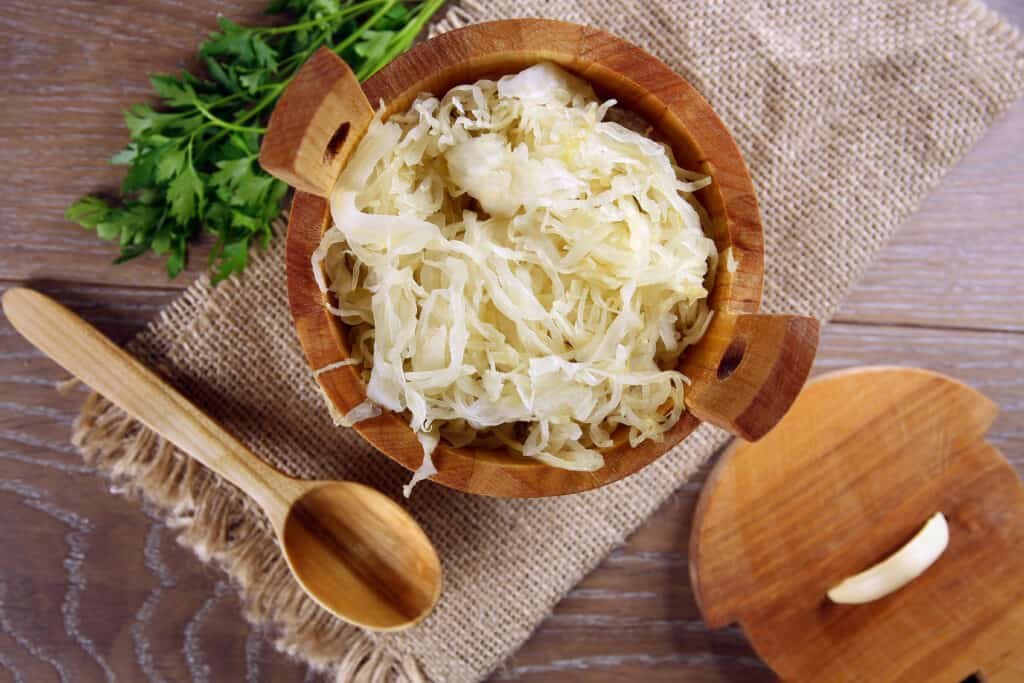
First, make sure that the sauerkraut is thoroughly washed before being frozen. This will ensure that any dirt or bacteria present is removed, helping the kraut last longer in the freezer.
Seaweed
Seaweed is a nutritious and tasty food that can be found in many dishes. From salads to sushi, seaweed offers a range of health benefits. However, if not stored properly it can quickly become unusable or contaminated. To ensure your seaweed stays fresh and healthy, freezing is an effective method for storage.

Freezing your seaweed will help retain the flavor and nutrition of the food. Start by selecting fresh seaweed from the store or local market; make sure there are no brown spots on it as this could indicate spoilage. Wash the seaweeds thoroughly before placing them in resealable freezer bags; try to squeeze out as much air as possible before sealing to prevent freezer burn. Once sealed, place them in the freezer where they can stay safely stored for up to 6 months.
Shallots
Freezing shallots is an easy and effective way to make sure that you always have healthy, fresh shallots on hand. It is a great option for those who are looking to increase the storage time of these small bulbs without compromising their quality or taste. Shallots, like other vegetables and fruits, can be frozen with ease and can last for up to one year in the freezer.

The process of freezing shallots is simple: peel the skin off, rinse them thoroughly in cold water, and then pat dry before placing them into an airtight container or baggie. Once inside the container or baggie, place it in your freezer where it will remain fresh for up to twelve months. When you are ready to use your frozen shallots simply thaw out by running under warm water until they become soft enough to chop and cook with!
Spaghetti Squash
Freezing Spaghetti Squash is a great way to keep them fresh and healthy over a long period of time. It’s an easy process that takes just minutes to do, and can help you save money in the long run by avoiding food waste. Here are some tips for freezing Spaghetti Squash so you can enjoy them for months to come.
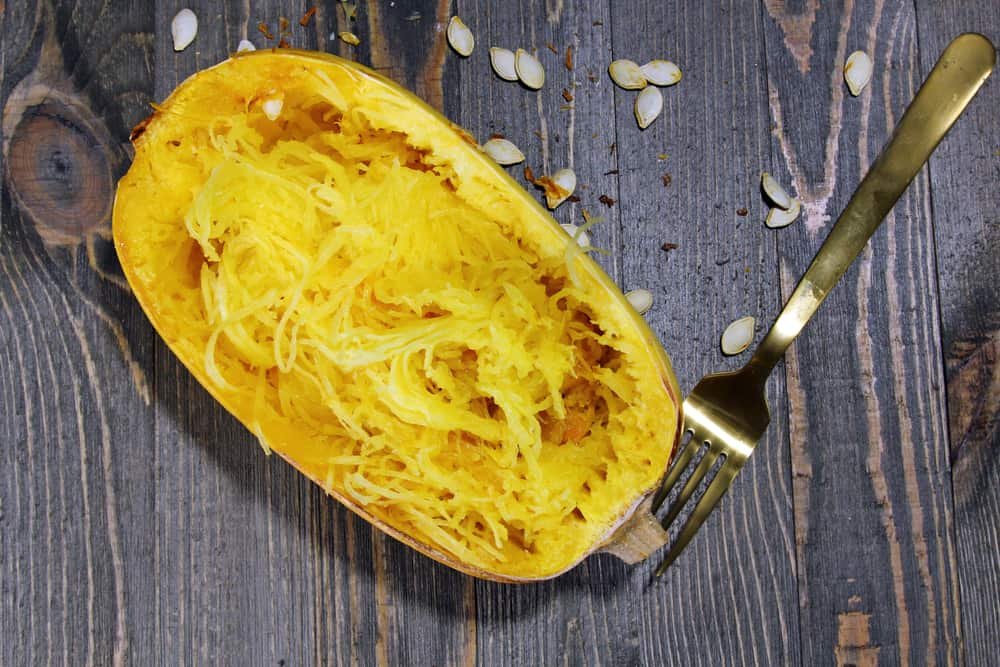
First, choose the freshest squash available at the store. Look for firm skin and no signs of discoloration or soft spots on the squash. Cut it into cubes or thin slices if desired, then place the pieces onto a baking sheet lined with parchment paper. Place in your freezer overnight until completely frozen solid. Once frozen, transfer the squash pieces to a labeled freezer bag or container, removing as much air as possible before sealing it tightly shut.
Spinach
Freezing spinach is an excellent way to ensure your leafy greens stay fresh for longer. This method of preservation helps retain the nutritional value and flavor of the vegetable, resulting in a healthier option for meals. Here are a few easy steps you can follow to freeze your spinach and make it last:

First, thoroughly wash the spinach before freezing, making sure to get rid of any dirt or bacteria that may be present on the leaves. Then, blanch them by submerging them in boiling water for about two minutes and quickly transferring them into cold water afterward. Once they’re cooled off and excess moisture has been removed, spread out the leaves on a baking sheet and place it inside your freezer until they’ve been frozen solid. Finally, transfer all of them into an airtight container or freezer bag so that all their flavors remain locked up tight.
Sweet potatoes
Frozen sweet potatoes are a great way to keep them fresh and enjoy their delicious flavor. With the right technique, you can freeze sweet potatoes in a way that will maintain their taste and texture for up to one year. Here’s how:

First, select your sweet potatoes carefully. Look for ones that are firm and free from blemishes or bruises. Peel off any outer skin and cut them into cubes. Place the cubes on a baking sheet and spread them out evenly so they don’t stick together when frozen. Put the tray in the freezer for two hours before transferring them to an airtight container or resealable bag for storage. Make sure all of the air is removed from the bag before sealing it tightly; this will help reduce freezer burn.
Swiss Chard
Freezing Swiss Chard is an effective way to extend its shelf life and make sure it stays fresh and healthy. This leafy green vegetable is packed with numerous essential vitamins and minerals, making it a great addition to any diet. Here are a few tips on how to freeze Swiss Chard quickly and easily so that you can enjoy this nutritious vegetable all year round.
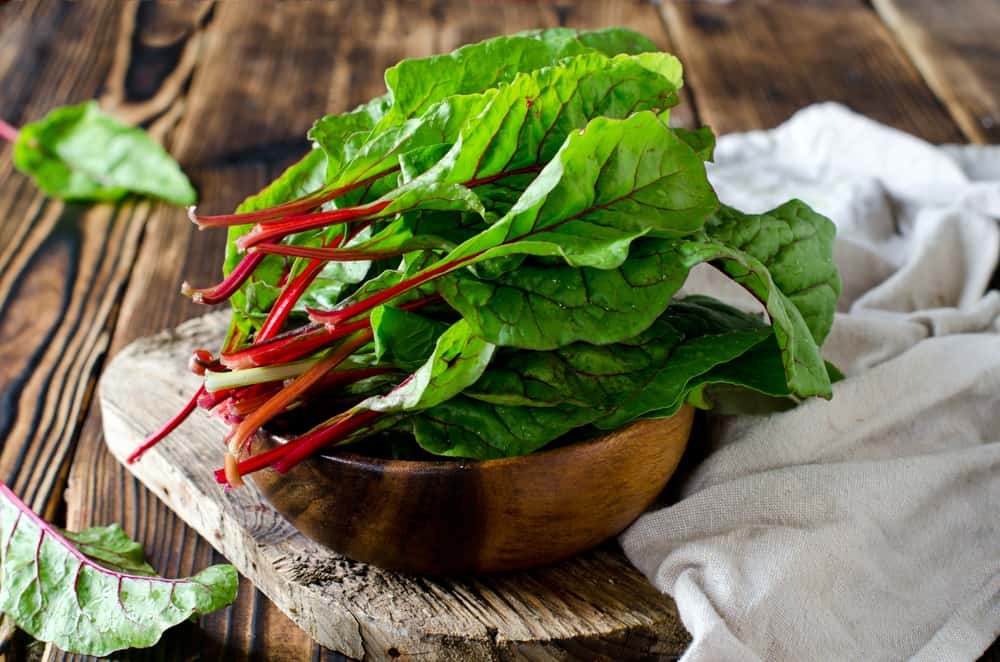
Firstly, the leaves should be washed thoroughly in cold water. To prevent wilting, they should then be dried off with paper towels or allowed to air dry completely before being stored away in the freezer. When packaging your chard for freezing, make sure that you remove as much of the air as possible from the bag or container – this will help keep it fresher for longer when frozen. Finally, label each package with the date of freezing so that you know exactly when it was put into storage.
Tomatillo
Tomatillos are delicious and nutritious fruits that are often used in Mexican dishes. If you’re looking to take advantage of the health benefits of tomatillos, as well as their unique flavor, freezing them is an easy way to keep them fresh and tasty. With just a few simple steps you can freeze your tomatillos so they last longer and remain healthy.
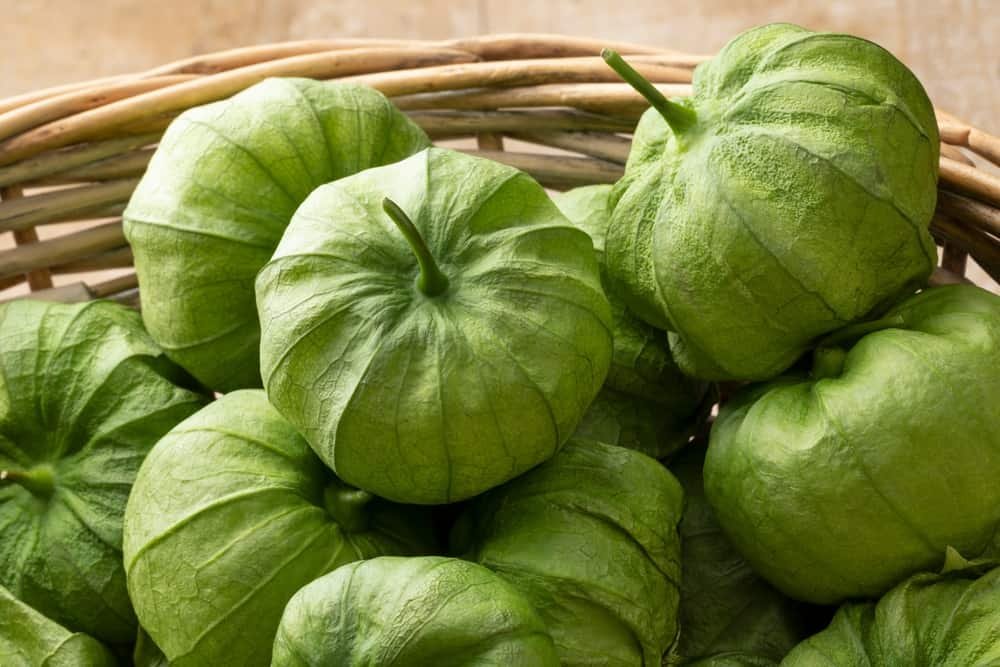
The first step is to make sure the tomatillos are fresh – look for ones with bright green husks, free from any brown or black spots. Once you have your ripe tomatillo, it’s time to prepare them for freezing. Wash the outside carefully using cold water to remove any dirt or debris. Then slice off both ends of the fruit before cutting into slices or cubes – whatever shape works best for your recipes!
Tomatoes
Freezing tomatoes is a great way to retain the flavor and nutrition of fresh tomatoes for months. Whether you want to preserve a bumper crop from your garden or save money on store-bought tomatoes, freezing them is an easy and cost-effective solution. Plus, with frozen tomatoes, you can enjoy out-of-season produce year-round! Here’s how to freeze tomatoes so they remain fresh and nutritious.

The first step is selecting ripe but firm tomatoes that are free from blemishes or soft spots. Wash the tomatoes thoroughly before cutting them into slices or wedges and putting them on a baking tray in a single layer. Place the tray in the freezer for 5–8 hours until each piece is frozen solid; this will ensure that the pieces don’t stick together when stored together later on.
Turnips
Freezing turnips is a great way to keep them fresh and healthy for extended periods of time. It’s important to properly prepare turnips before freezing them if you want to retain their flavor and texture. To freeze turnips, start by washing the vegetables thoroughly and then using a knife or potato peeler to remove their skins. Once peeled, cut them into smaller pieces so they can be frozen more easily. Place the pieces in an airtight container or freezer bag and store in the freezer for up to one year.

When it comes time to use your frozen turnips, allow them to thaw overnight in the refrigerator before cooking with them. While cooked turnip dishes are best enjoyed right away, freezing them will help preserve their nutritional value and extend their shelf life significantly.
Watercress
Watercress is a leafy green vegetable that has a high vitamin A and C content. It has a crunchy texture and pungent flavor, making it an ideal addition to any salad or sandwich. Unfortunately, if not stored properly, watercress can easily spoil. Fortunately, freezing is an effective way to preserve this veggie while maintaining its fresh flavor and nutrients. Here’s how to freeze watercress so that you can enjoy its taste and health benefits for months.
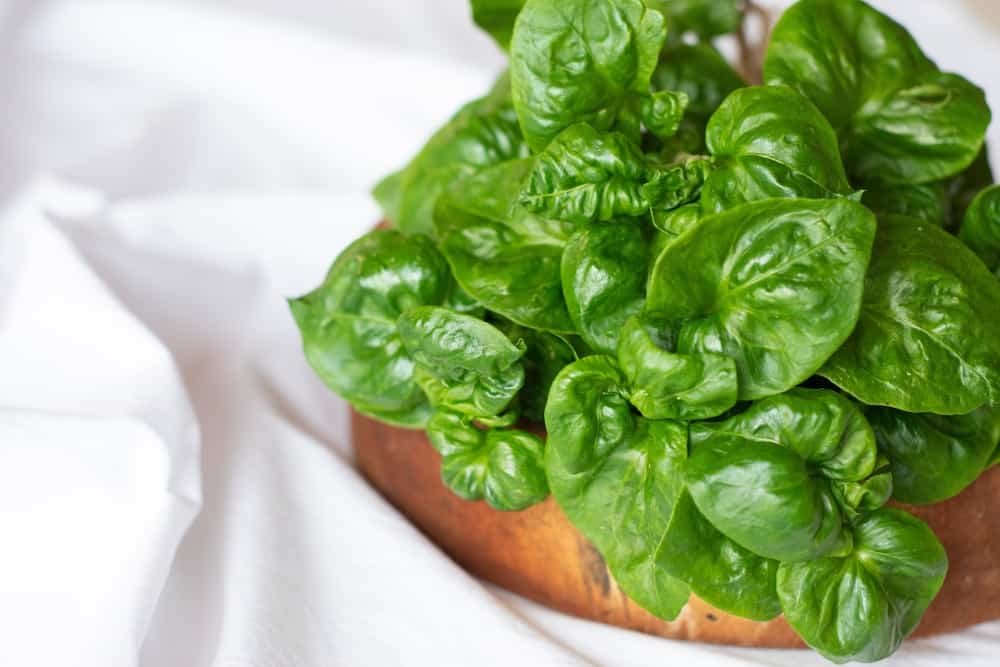
First, make sure the watercress is completely dry before freezing it; otherwise, you may end up with soggy greens. Wash the leaves thoroughly under running cool water and then pat them dry with paper towels or a kitchen cloth until all moisture is gone.
Water Chestnut
Freezing water chestnuts is a great way to keep them fresh and healthy for an extended period of time. Water chestnuts are a nutritious vegetable that can be enjoyed raw or cooked in many dishes. To make sure your water chestnuts stay fresh and healthy, you should freeze them properly.
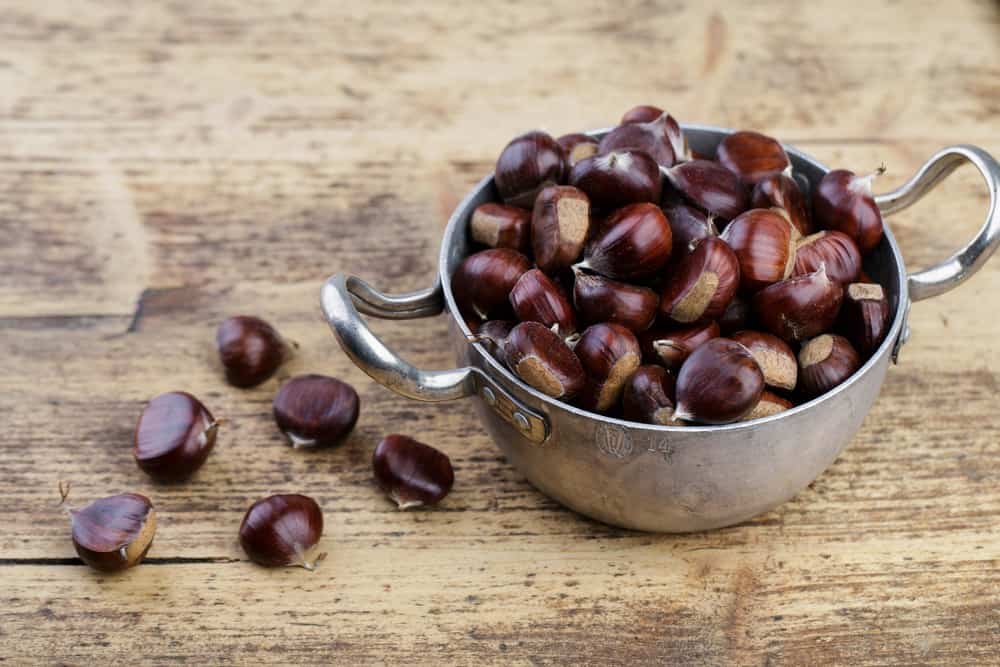
The process of freezing water chestnuts is quite straightforward: first, clean the water chestnuts with cold running water to remove any dirt or residue; next, peel off their skin and cut into desired sizes; then, blanch the pieces in boiling hot water for about one minute; lastly, pat dry with paper towels before transferring the pieces onto a sheet tray lined with parchment paper. Place the tray in a freezer set at 0 degrees Fahrenheit until they become completely frozen – this should take around 3-4 hours depending on your freezer’s temperature setting.
Zucchini (Courgette)
Preserving zucchini (courgette) is a great way to enjoy the freshness of summer all year long. Freezing zucchini is a simple and efficient way to keep your produce fresh and healthy, without having to worry about it expiring before you can savor its delicious flavor. Whether you want to use it in salads, soups, or baked goods, frozen zucchini lasts up to 6 months and allows you to enjoy seasonal vegetables throughout the whole year.
